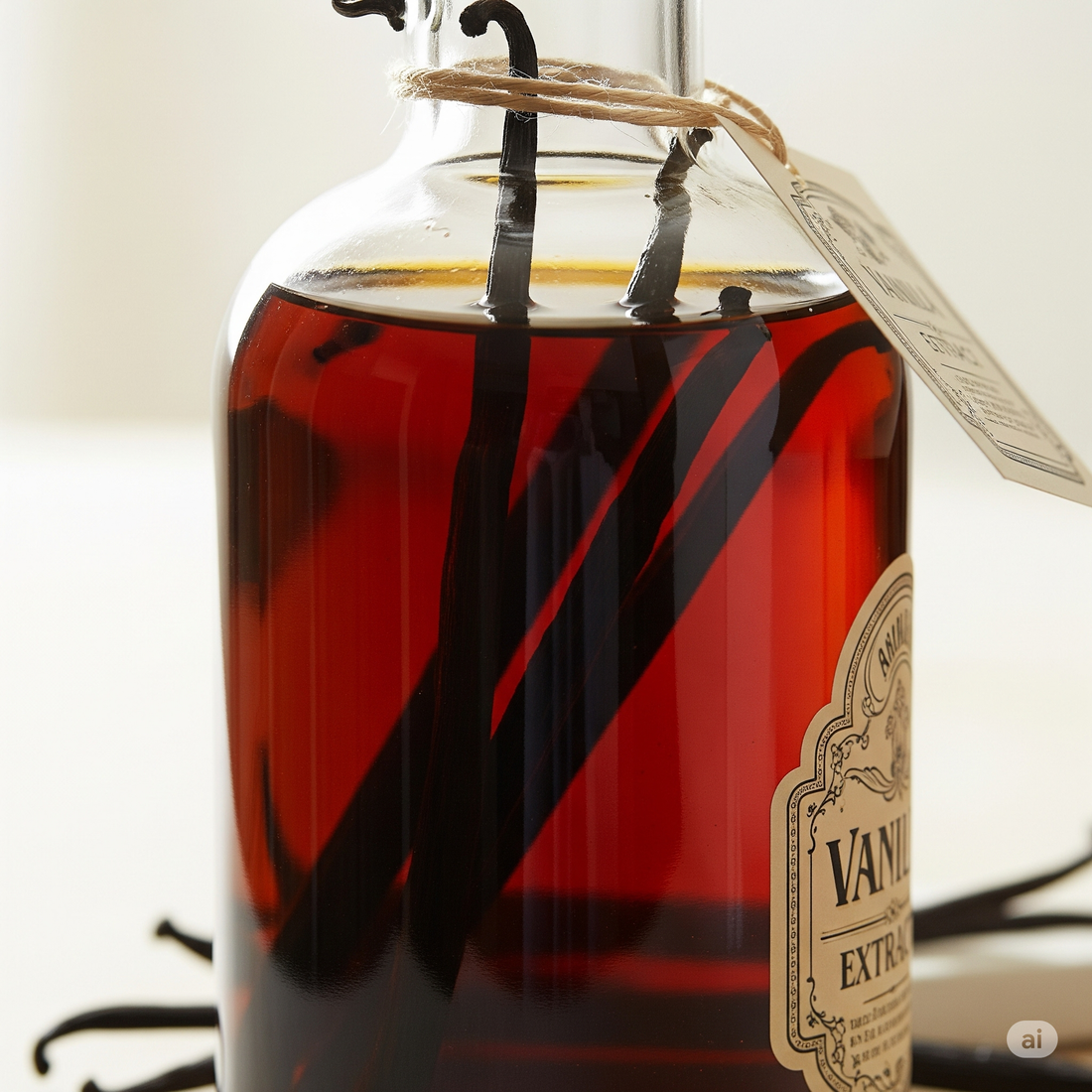
The Secret to Perfect Vanilla Extract Every Time – Proven Tips & Techniques for Rich Flavor
Share
Why Homemade Vanilla Extract is Superior
There’s something almost magical about vanilla. That warm, aromatic note it brings to baked goods, desserts, and even savory dishes can turn an ordinary recipe into something extraordinary. While store-bought vanilla extract is convenient, it often comes with compromises in flavor, quality, and purity.
Homemade vanilla extract, on the other hand, offers unmatched depth and authenticity. You control the ingredients, the process, and—most importantly—the taste. Plus, making it yourself is surprisingly simple and cost-effective in the long run.
Understanding Vanilla Extract
What is Vanilla Extract?
Vanilla extract is a concentrated flavoring made by soaking vanilla beans in alcohol. Over time, the alcohol draws out the bean’s complex aromatic compounds—vanillin being the most notable—producing that signature sweet, floral, and slightly woody flavor we all love.
The Difference Between Pure and Imitation Vanilla
-
Pure Vanilla Extract: Made entirely from real vanilla beans, as per FDA standards, with no artificial additives.
-
Imitation Vanilla: Contains synthetic vanillin, often derived from wood pulp or petrochemicals, lacking the nuanced flavors of natural vanilla.
Key Ingredients That Make It Work
The only essential ingredients are vanilla beans and alcohol. Some people add a touch of sugar or glycerin to soften the flavor, but it’s optional.
Choosing the Right Vanilla Beans
The type of vanilla bean you choose significantly impacts the final flavor of your extract.
Madagascar Bourbon Vanilla Beans
Known for a rich, creamy, and sweet flavor profile—ideal for classic baking and desserts.
Tahitian Vanilla Beans
Floral, fruity, and slightly exotic—perfect for lighter desserts, custards, and creams.
Mexican Vanilla Beans
Warm, spicy, and bold—pairs beautifully with chocolate, coffee, and deep, rich desserts.
Selecting the Right Alcohol Base
The alcohol acts as a solvent, drawing out and preserving the bean’s flavors.
Vodka – The Neutral Classic
Vodka is popular because its neutral profile allows the vanilla flavor to shine without interference.
Rum – Adding Depth and Warmth
Rum lends a subtle sweetness and complexity, complementing darker baked goods and sauces.
Brandy – Luxurious and Bold
Brandy creates a sophisticated extract with notes of oak and caramel, ideal for gourmet recipes.
Tools and Equipment Needed
-
Sharp knife or kitchen scissors
-
Cutting board
-
Airtight glass bottles or jars (dark glass preferred)
-
Funnel
-
Measuring tools
-
Labels (for tracking infusion time)
Step-by-Step Guide to Making Vanilla Extract
Preparing the Beans
-
Use 5–7 vanilla beans per cup of alcohol for a rich flavor.
-
Split beans lengthwise to expose the seeds, but keep them attached for easier handling.
Combining Beans and Alcohol
-
Place the prepared beans into your sterilized bottle or jar.
-
Pour alcohol over beans, ensuring they are fully submerged.
The Infusion Process
-
Seal the jar tightly.
-
Store in a cool, dark place.
-
Shake gently once a week to redistribute flavor compounds.
Storing for Best Results
-
Use dark amber bottles to protect from light.
-
Keep away from heat sources.
How Long to Age Vanilla Extract
Patience is key—minimum 8 weeks, but for the deepest flavor, 6–12 months is ideal.
Common Mistakes to Avoid
-
Using too few beans (results in weak flavor).
-
Exposing extract to light or heat.
-
Using flavored alcohol that overpowers the vanilla.
Tips for Intensifying Flavor
-
Add extra beans as you use the extract (top off with more alcohol).
-
Use premium-grade beans for stronger flavor.
-
Let it age beyond a year for gourmet quality.
How to Use Homemade Vanilla Extract
-
Baking: cookies, cakes, muffins.
-
Beverages: coffee, cocktails, smoothies.
-
Savory dishes: marinades, sauces, roasted meats.
Storing and Shelf Life
Properly stored, homemade vanilla extract can last indefinitely—its flavor only gets better with age.
FAQs
1. Can I use glycerin instead of alcohol?
Yes, glycerin makes a non-alcoholic vanilla extract, but it’s less effective in extracting flavor.
2. How many vanilla beans should I use per cup of alcohol?
For strong extract, use 5–7 beans per cup.
3. Can I reuse the vanilla beans?
Yes—top up with alcohol and continue infusing until the flavor weakens.
4. Is homemade vanilla extract stronger than store-bought?
Often, yes—especially if you use high-quality beans and let it age longer.
5. What’s the best alcohol proof for vanilla extract?
Choose 35–40% ABV (70–80 proof) for optimal extraction.
6. Can I speed up the extraction process?
Not really—flavor development needs time. Heating can damage delicate compounds.
Conclusion
Making your own vanilla extract is not only rewarding but also ensures you’re getting pure, authentic flavor every time. With the right beans, alcohol, and patience, you can create an extract that elevates every recipe from good to unforgettable.



